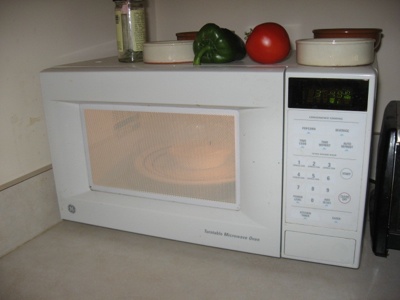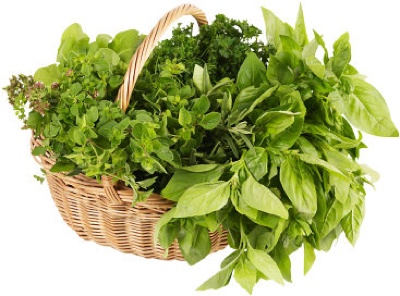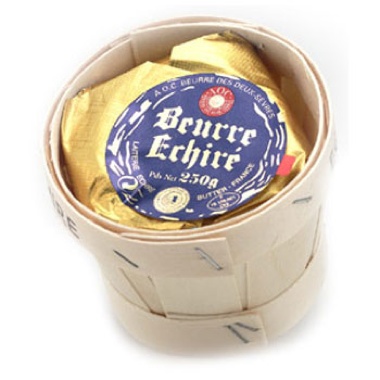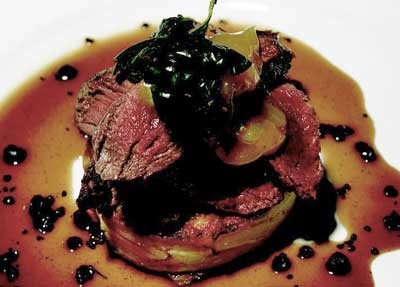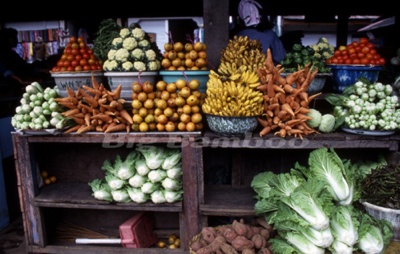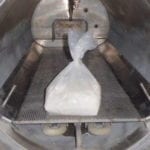The Microwave Oven is good for one thing only: defrosting; and even that can be done just as easily by putting something in the refrigerator one day before your need it to defrost gently. Microwaves do not add to the flavor of anything they cook, whereas stove top or oven cooking does – through the caramelization of juices (which is what gives us the brown crispy outside of meat). Having a microwave in the house leads to the temptation to cut corners. I have not had a Microwave for 3 years and I can still cook an entire meal from scratch in less than 40 minutes – and I guarantee it tastes a hell of a lot better than anything cooked in a microwave.
If you are using a recipe, read it twice from beginning to end before you start doing any cooking. So often we skim a recipe and then in our hurry (once things start to heat up) we neglect certain steps. By reading the recipe twice, you are less likely to skip a step which can result in disaster. Having said this, I also recommend that try to experiment with your cooking – don’t become a slave to your cookbook – but make the choices intentionally, not through forgetfulness.
If you are cooking a meal with multiple components – such as a roast chicken with vegetables, it can be very helpful to write a list of what you need to do and when. You can write down specific times (I find it useful to work back from the time you want to serve). This results in a much smoother working process and you won’t have people waiting for dinner to be served late.
Wine can add a lot of flavor to a meal; if you are braising meat – for example in a pot roast, pour in some wine. The alcohol content left after cooking is not enough to make this an “adults-only” meal (on the other hand, I think children should be given wine with dinner from a very young age anyway). The general rule is to use red wine with red meat, and white with white. If you are going to pan fry some fish, just pour in a half cup of white wine and some herbs, and you can make a lovely meal with a ready made sauce.
Dried herbs have little or no flavor. This tip alone can transform bland food in to masterful food. You can either grow your own herbs, or you can buy them fresh from the supermarket. The herbs you are most likely to use repeatedly (and therefore the best ones to grow yourself) are thyme, bay leaves, parsley (use the Italian flat leaf type – it has a lot more flavor than curly parsley), and (to a lesser extent unless you like to do a lot of oriental cooking,) coriander (cilantro). Another less common herb that you should try if you haven’t is tarragon – it has a slight aniseed flavor and is excellent with fish or chicken; buy the French kind – the other type (Israeli) has no flavor.
Forget everything you have been told about salt and health. If you want to eat good food, you need to use plenty of salt. A real pinch of salt involves using 2 fingers and a thumb, not the forefinger and thumb. People have been frightened off using salt by government advertisements, and it is ridiculous. The French eat a lot of salt (and butter) and they have a very low cardiac deathrate compared to a nation such as England which has a bizarre obsession with salt reduced diet. When boiling pasta, make sure the water tastes like the sea. If you have never tasted seawater, it tastes like it is so salty that a mouthful would make you gag. For a very large pasta pot of water, I usually use two small handfuls of salt. When cooking vegetables in water, always add salt. Contrary to popular belief, salt in cooking water does not stop the color from leeching out of vegetables, it simply enhances their flavor. Also, if you boil your potatoes before roasting, salt water helps to give more color and crunch to the outside.
Butter is fundamental in good cooking. When you fry a steak, you should always fry it in butter (with a little oil added to stop the butter burning). Butter adds flavor to anything, and can also be used as a thickener (see sauce below). Do not use margarine, do not use semi-soft butter. Always cook with unsalted butter (then you can decide exactly how much salt you want the dish to have). If you really want to improve boiled or steamed vegetables, undercook them, then add them to a pan with a big knob of butter and finish the cooking over a high heat. Add salt, pepper, and chopped parsley.
They say that a good sauce is the difference between a cook and a chef. Sauces are extremely easy to make and you should almost always prepare a sauce to go with your meals. If you have fried meat in a frying pan, leave the heat on and pour some wine in to the pan – scrape all the bits off the bottom and cook until the wine has evaporated by half. Pour in some stock (any type will do, but do try to match the stock with the meat – or use chicken for everything except fish) and cook down until it is half again. Taste it and add salt and pepper if you need to. Strain and serve. Additionally, if you want your sauce to be a little thicker, whisk in a knob of butter off the heat.
Fresh ingredients make all the difference. Vegetables and meat bought from small producers (such as local farms) is even better. Supermarkets have strict requirements about the appearance of food and very little concern about taste. An apple bought from the local market will always be better than anything you can buy in a supermarket. Add to that the overpacking that we see so often in chain markets and you have a recipe for disaster. I guarantee you that any of your regular recipes when made with fresh ingredients and not supermarket ingredients will be 100 times better.
Tasting is the most important part of cooking. You must constantly taste what you are cooking as you cook it. This is true even of things like hamburgers. You should take a little bit of your hamburger meat and fry it – then taste it. Keep adding more salt and pepper or other ingredients and repeat the frying. When it finally tastes right, you can make your burgers. Because this is such an important part of cooking, many chefs will not cook with ingredients they do not like. Tasting early in the cooking process can save you from a disaster later on – when it is too late to recover. Read More: Twitter Facebook YouTube Instagram
